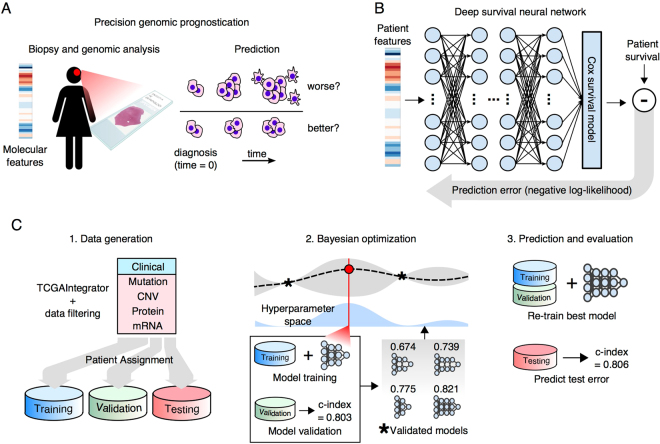Figure 1.
Overview of the SurvivalNet framework. (A) Accurate prognostication is crucial to clinical decision making in cancer treatment. Molecular platforms produce data that can be used for precision prognostication with learning algorithms. (B) Deep survival models are neural networks composed of layers of non-linear transformations, driven by a Cox survival model at the output layer. Model likelihood is used to adaptively train the network to improve the statistical likelihood of the overall survival prediction. (C) The SurvivalNet framework enables automatic design optimization and validation of deep survival models. Molecular profiles obtained from TCGA datasets are randomized, assigning patients to training, testing and validation sets. Bayesian optimization searches the space of hyperparameters like the number of network layers to optimize the model design. Each selected design is trained and evaluated using validation samples to update the Bayesian optimizer. The best model design is then evaluated on the independent testing set to measure the final optimized model accuracy.

